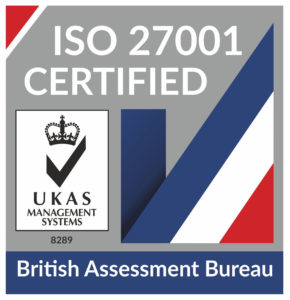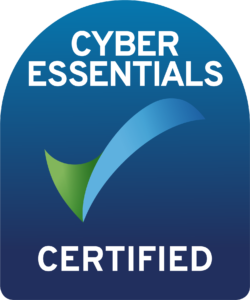
HaloITSM Guides
Documentation to assist with the setup and configuration of the HaloITSM platform
Connectwise RMM Integration Guide
In this guide we will cover:
- Configuring ConnectWise RMM
- Configuring Halo
- Syncing Data
The ConnectWise RMM Integration can be used to connect your Halo instance to your ConnectWise asset management tool; allowing you to sync sites and assets related to those sites from ConnectWise.
Configuring ConnectWise RMM
In ConnectWise RMM, navigate to Settings > Admin > Integration > PSA Integration and select "Other Authorized Vendors" from the dropdown. Ensure you have access to the below.
- API Token: This should be entered into Halo later.
- Integrator User: Enter a Username for the integration user.
- Integrator Password: Enter a Password for the integration user.
- Confirm Integrator Password: Re-enter the password.
- Callback URL: This is your Halo URL followed by
"/api/notify/ConnectWiseRMM". Example:https://yourhalo.com/api/notify/ConnectWiseRMM. - Callback Method: Set this to "GET".
Fig 1. API integration.
Configuring Halo
In Halo, go to Configuration > Integrations > ConnectWise RMM.
Enter your ConnectWise RMM URL, up to and including .net, as well as the username and password you created above.
Copy the API Token from ConnectWise RMM into the "API Key" field..
Fig 2. ConnectWise RMM setup.
Next in the "Sites" section, select the default customer that sites will be assigned to if no match is found in the mappings table, as well as site and asset type mappings. Use the tables to map ConnectWise sites and assets to Halo equivalents.
Fig 3. Sites configuration.
In the "Assets" section, map fields and select an asset type to assign if no match is found in the mappings table.
You can also choose a unique identifier in the "Asset Matching Field" to match existing Halo assets with imported assets from ConnectWise RMM.
Fig 4. Asset matching.
Do not update Asset Types(v2.190+) - Available from v2.190+. When enabled the asset type of the asset in Halo will not be updated when asset syncing/imports next run. This allows you to adjust asset type mappings or manually change an asset's type in Halo without the asset type being changed by a ConnectWise sync.
Alerting
Alerts from Connectwise can automatically log tickets in your Halo instance, allowing you to manage alerts from Halo. Alerts are processed using webhooks, meaning tickets will be logged almost instantaneously after the alert occurs.
In the "Alerting" section, enable alert processing, when enabled additional fields will appear to specify ticket type and assigned user that will be used to log tickets created from alerts. We recommend creating a dedicated alert ticket type, or using the out-of-the-box 'Alert' ticket type for this. The user assigned to the ticket will be the user the assets that triggered the alert belongs to, or the general user of the customer the asset is under. If neither can be matched the user selected in the 'New Alert User' field will be the user assigned to the generated ticket.
Fig 5. Alerting setup
Now you will need to configure a webhook in Connectwise to trigger the alert.
From v2.192+ you can add a level of authentication to the webhook using the 'authentication' field.
Use a token query parameter - When this option is selected you will need to generate a token for the webhook created in Connectwise. Then enter this token in the 'token' field in Halo. You will also need to include this token as a parameter in the Webhook URL, this parameter will be checked by the Halo API before the webhook is processed. This will prevent any other webhooks sent to this endpoint being processed, adding an additional layer of security.
No authentication - When selected no webhook authentication will take place, a token for the webhook does not need to be generated but this is a less secure method.
Once this is set head to Connectwise and create a webhook, the trigger for the webhook will determine when a ticket is created in Halo, so configure a webhook that is triggered each time a chosen event/alert occurs. The URL for the webhook will follow the format:
If you are using authentication for the webhook your webhook URL will follow the format:
- https://YOURHALOURL/api/notify/connectwisermm?token={insert_token_here}
Once you have created the webhook a ticket in Halo should create each time the webhook fires.
Site and Asset syncing
You can also enable the Halo Integrator to activate automatic scheduled syncing. If you don’t have a Halo Integrator, contact Halo Support. Selecting this option allows you to choose which entities (Sites, Assets, or both) to sync. If "Deactivate Assets in Halo when deleted in ConnectWise RMM" is enabled, any assets deleted in ConnectWise RMM will be deactivated in Halo during the next integrator sync.
Fig 6. Alerting.
Syncing Data
Click "Activate" on the ConnectWise RMM page. You should see a message: "Ticketing API Configured Successfully."
In Halo, click "Import Sites". A list of ConnectWise RMM sites should appear. Click "Start" in the top right to begin the import. Once sites are imported, click "Import Assets" to sync assets from ConnectWise RMM to Halo.
Your ConnectWise RMM integration is now active! If the Halo Integrator is enabled, data will continue to sync on the scheduled interval.
Popular Guides
- Asset Import - CSV/XLS/Spreadsheet Method
- Call Management in Halo
- Creating a New Application for API Connections
- Creating Agents and Editing Agent Details
- Departments and Teams
- Halo Integrator
- Importing Data
- Multiple New Portals with different branding for one customer [Hosted]
- NHServer Deprecation User Guide
- Organisation Basics
- Organising Teams of Agents
- Step-by-Step Configuration Walk Through



